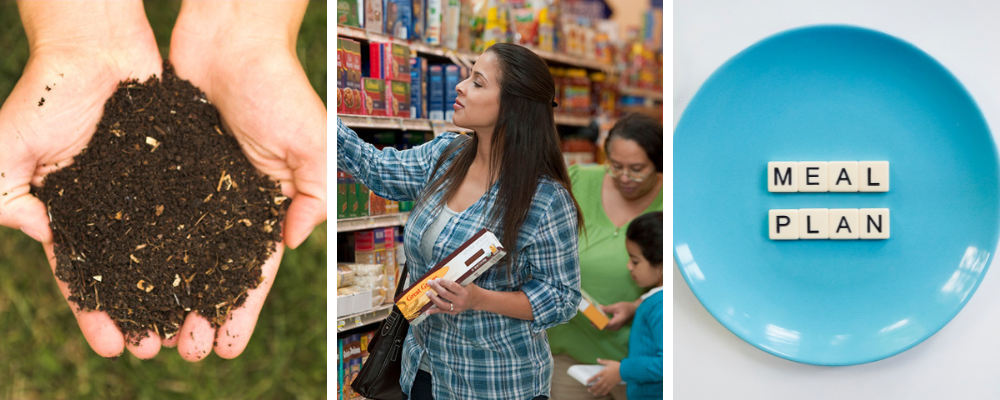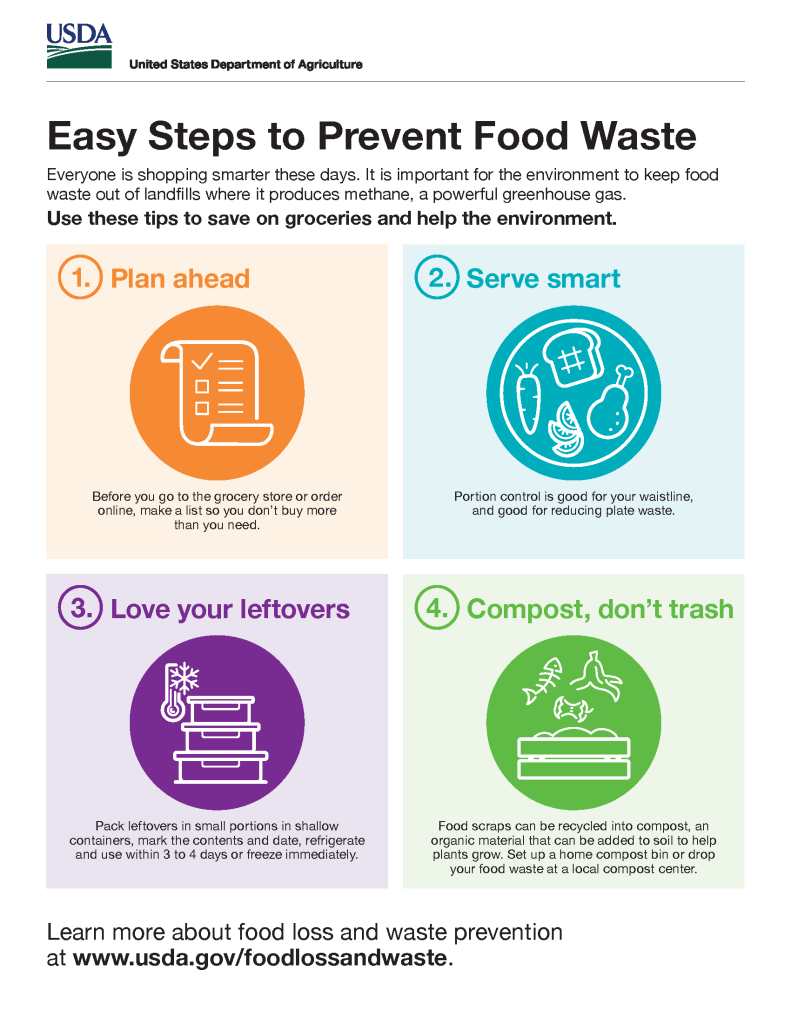
5 Practical Tips to Reduce Food Waste
— By Kate Yerxa, MS, RD, Extension Professor, University of Maine Cooperative Extension
Food waste is a significant concern, with an estimated one-third of all food produced in the United States ending up in landfills. That’s 33% of the food produced! In the United States, food is plentiful, but many people lack financial resources and this puts them at risk for nutrition insecurity, or lack of “equitable access to healthy, safe, and affordable foods that promote optimal health and well-being.” (USDA Actions on Nutrition Security) By reducing the amount of food thrown away, we can improve nutrition security and the economic conditions of local food producers. Below are 5 tips you can implement to reduce food waste in your own kitchen, and BTW, save money! A win-win!
1. Plan Your Meals Ahead of Time and Make a List
Before heading to the grocery store, take some time to plan your meals for the week. This will help you avoid impulse buys and ensure you only purchase what you’ll use. Don’t forget to take your list with you to the store!
2. Be a Savvy Shopper
Pay attention to “sell by” and “best by” dates and choose food items with a longer shelf life. Consider buying in bulk for non-perishable items and buying fresh produce in smaller quantities to prevent spoilage. If you are unsure about what the date on a food label means, use the USDA’s Is This Still Good to Eat? handout to help you keep your food safe while reducing the amount of food you throw away.
3. Store Food Properly
Knowing how to store different types of food correctly can significantly extend its shelf life. Learn about the optimal storage conditions for fruits, vegetables, dairy products, and other perishable items. FoodSafety.gov’s Food Keeper App provides information on the optimal storage times for freshness and safety. Also, if you choose to buy foods in bulk, make sure you have the appropriate containers and conditions to store that food in, or it could go bad before you have time to use it.
4. Get Creative with Leftovers
Leftovers don’t have to be boring! Get creative and repurpose them into new dishes. Leftover chicken can become a stir-fry, roasted vegetables can be added to soups or salads, and even wilting greens can be blended into smoothies. Label and freeze leftovers in food grade, freezer safe containers. I always enjoy using leftover pulled pork on nachos or in grilled cheese.
5. Compost
Composting is a fantastic way to turn food scraps and yard waste into nutrient-rich soil amendment. This reduces the amount of waste going to landfills and gives back to your garden or houseplants. The University of Maine Cooperative Extension has put together trusted resources about composting to help you get started.
The USDA has put together a Food Loss and Waste website with information and resources for multiple audiences.

